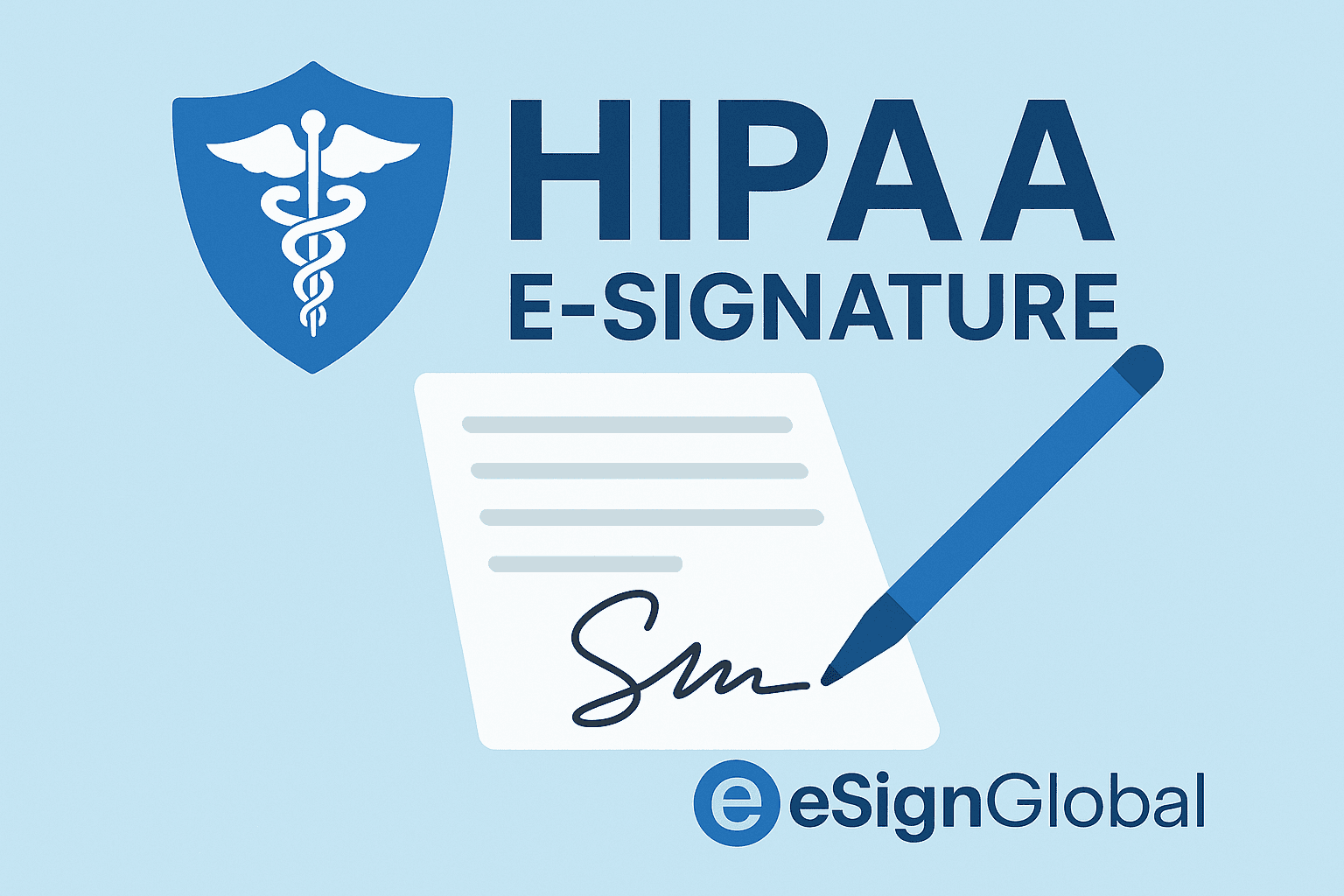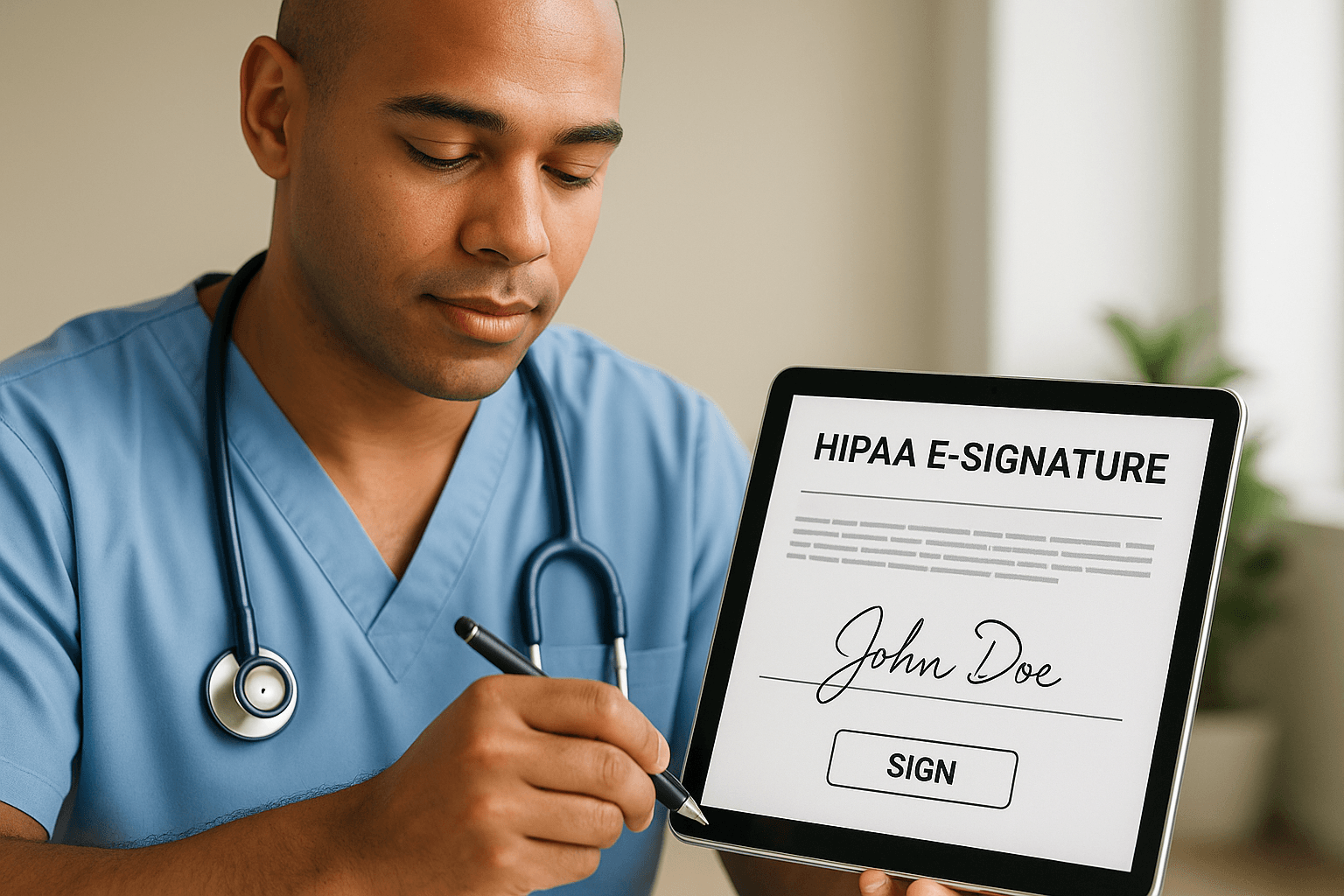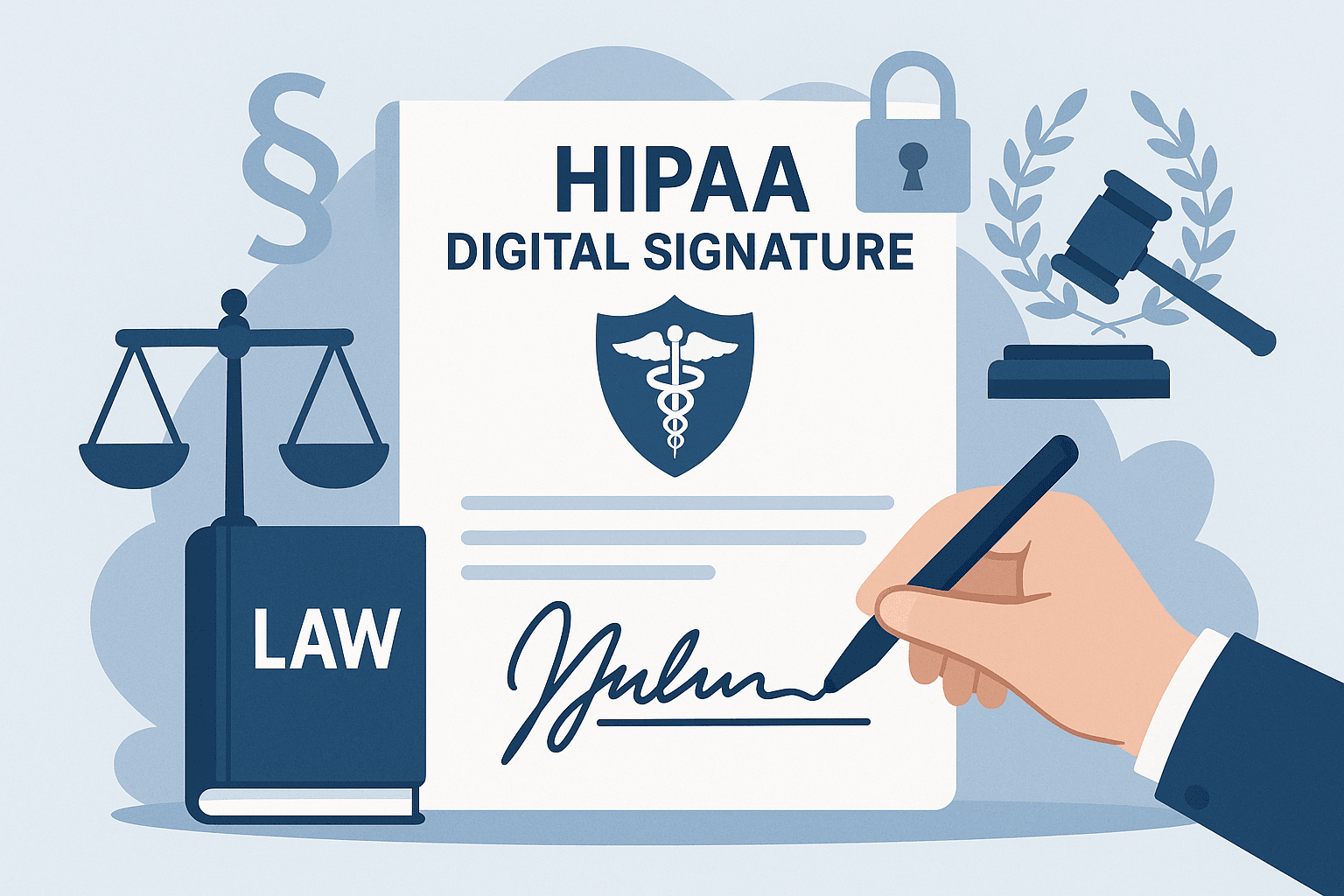WhatsApp or email with our sales team or get in touch with a business development professional in your region.
HIPAA E-Signatures and Multi-Factor Authentication: Best Practices for Security





Navigating HIPAA Compliance in Healthcare: The Strategic Role of eSignatures
Among the many challenges facing the healthcare industry, safeguarding sensitive patient data while improving operational efficiency stands at the forefront. The introduction of digital solutions such as electronic signatures (eSignatures) has paved the way for a more agile and efficient healthcare workflow. Yet, for these solutions to be successfully adopted at scale, they must withstand the rigorous data protection standards set by the Health Insurance Portability and Accountability Act (HIPAA). In real-world applications, not all eSignature providers meet these requirements. This is where selecting a HIPAA-compliant, locally attuned, and scalable platform like eSignGlobal becomes critical.

Understanding HIPAA Through a Practical Lens
Enacted in 1996, HIPAA establishes a federal framework for the confidentiality, integrity, and availability of protected health information (PHI). It contains two major components: the Privacy Rule and the Security Rule. While the Privacy Rule governs the use and disclosure of PHI, the Security Rule lays down the technical and physical safeguards required for electronically protected health information (ePHI). Crucially, any system or technology that interacts with PHI — including eSignature platforms — must abide by these provisions.
Under the HIPAA Security Rule (45 CFR Part 160 and Subparts A and C of Part 164), covered entities and their business associates must implement administrative, technical, and physical safeguards. For eSignatures, this means providing robust access control mechanisms, ensuring end-to-end encryption during document transmission and storage, and maintaining detailed audit trails of who signed what and when.
The Legal Interplay: Federal Baseline, Local Enhancements
While HIPAA is a federal law applicable nationwide, individual states often impose healthcare data regulations that are more stringent. For instance, California’s Confidentiality of Medical Information Act (CMIA) imposes steeper penalties for unauthorized disclosures, while New York’s SHIN-NY policy demands real-time audit logging.
Therefore, for healthcare providers operating in multiple jurisdictions, ensuring eSignature platforms can accommodate both HIPAA and state-specific data handling requirements is essential. This compliance matrix becomes an operational necessity—not a luxury.
Providers like eSignGlobal stand out because they’ve engineered their architecture not just to comply with HIPAA at the federal level but also integrate modular policy frameworks for localized legal obligations. Their services can dynamically adapt privacy configurations based on the user’s legal jurisdiction, ensuring regional compliance without the need for multiple solutions.

Why Generic Isn’t Good Enough: Sector-Specific Needs of Healthcare Workflows
Unlike retail or logistics, healthcare workflows are deeply entrenched in regulatory responsibilities and require precise recordkeeping and accountability. Consider a consent form for a surgical procedure or a release of medical records — both must be signed with clear identity verification, non-repudiation, timestamp fidelity, and instant accessibility by both the patient and provider.
Generic electronic signature solutions often falter in these scenarios. Many lack proper audit trails, secure identity verification (such as multi-factor authentication or digital certificates), or even secure tokens to restrict who can sign. Furthermore, in shared work environments like hospitals, granular access permissions and session timeouts are vital — features standard in eSignGlobal but not in consumer-grade eSigning tools.
Real-life examples include healthcare providers who faced compliance sanctions because subcontracted eSignature providers lacked business associate agreements (BAAs) — a HIPAA-required contract stipulating the responsibilities of vendors handling PHI. eSignGlobal not only offers signed BAAs but also integrates incident response protocols and breach notification workflows natively into their solution stack.
Clinical Efficiency with Legal Backbone
Transitioning consent, onboarding, and compliance documentation to digital channels has immediate operational benefits. A 2023 HIMSS survey indicated that nearly 74% of healthcare providers using compliant eSignature platforms reduced paperwork processing times by over 60%. Equally important, patient satisfaction scores increased by over 40%, attributed to faster intake and discharge processes.
Hospitals using eSignGlobal have reported that their turnaround time for patient consent dropped from 36 hours (paper-based) to under two hours with full legal traceability. This improves not only service speed but also minimizes treatment delays — a crucial factor in emergency care settings.

Affordability Without Compromising Trust and Control
One of the common deterrents for adopting compliant eSignature solutions in smaller practices and community hospitals is cost. However, studies have consistently shown that digitizing document workflows results in significant long-term savings. According to a 2022 Frost & Sullivan report, organizations that adopted vertical-specific eSignature platforms in healthcare cut administrative overhead by up to 35% within 12 months. These savings stemmed primarily from eliminating paper waste, reducing courier costs, and minimizing storage needs.
eSignGlobal has optimized its pricing for healthcare providers by offering industry-specific bundles and per-user pricing schemes — making enterprise-grade security available even for mid-sized clinics and outpatient centers. Moreover, real-time customer support, tailored onboarding, and a strong Service Level Agreement (SLA) model contribute to responsive and reliable deployment.
The Road Ahead: eSignatures as a Pillar of Digital Health Transformation
As health systems move toward more interoperable environments under initiatives like the 21st Century Cures Act and FHIR-based data sharing, the need for secure and verifiable signature workflows increases. Consent models, third-party data sharing, and remote patient engagements will all rely on trusted digital identities.
Platforms like eSignGlobal are already preparing for this future by integrating Health Information Exchange (HIE) protocols, supporting mobile-first experiences, and enabling secure biometric verification options. With decentralization and patient empowerment becoming policy cornerstones, the ability to tie legally valid signatures to personal health management is no longer optional — it’s foundational.
Closing Reflections
In healthcare, technology never stands apart from responsibility. Implementing eSignature solutions is not a matter of convenience but a legal and ethical obligation to protect patient rights while streamlining care. For healthcare entities operating in environments where both federal and state laws bear weight, the path forward requires a partner who understands not just signatures — but the nuances of healthcare law, data integrity, and on-the-ground clinical realities.
eSignGlobal’s platform doesn’t just offer a toolkit — it provides a strategic advantage. Its commitment to HIPAA compliance, local regulatory mapping, and operational scalability makes it a trusted solution across hospitals, medical groups, and insurers. In an age where every click and signature carries legal weight, that level of precision is no longer optional — it is essential.

Shunfang
Head of Product Management at eSignGlobal, a seasoned leader with extensive international experience in the e-signature industry.
Follow me on LinkedIn
Get legally-binding eSignatures now!
30 days free fully feature trial
Business Email
Get Started
 Only business email allowed
Only business email allowed
Latest Articles
Top DocuSign Alternatives in India
Best DocuSign Alternatives in China
Top DocuSign Alternatives in the UK
Best Open Source DocuSign Alternatives
DocuSign Alternatives for Hong Kong Businesses
Best DocuSign Alternatives in Hong Kong
Top DocuSign Alternatives for Small Businesses
Best Free DocuSign Alternatives for Individuals


